| The First
Doctor (1963-1966) |
 |
Season One (1963-64): Into The Vortex
First appearances of the Doctor, Susan, Ian, Barbara, the TARDIS, the
Daleks and the Thals.
|
 |
Season Two (1964-65): Flight Through
Eternity
First appearances of Vicki, Steven and the Meddling Monk. The Monk is the
first member of the Doctor's own people to be introduced, apart from Susan
and the Doctor himself.
|
 |
Season Three (1965-66): Turbulence
First appearances of Katarina, Sara, Dodo, Polly, Ben and the Toymaker.
|
 |
Season Four (1966): Wearing A Bit Thin
First appearance of the Cybermen. The Doctor regenerates for the first
time.
|
| Season One (1963-64): Into The
Vortex |
| Companions and Recurring Characters |
|
Susan (who often used the last name
“Foreman”) was the Doctor's first travelling companion; she
was also his grandchild.
Carole Ann Ford (bio) made her first appearance as
Susan in 100,000 BC (November 1963)
and her last in Dimensions In Time
(November 1993).
|
|

|
|
Ian Chesterton was Susan's science teacher
whom the Doctor kidnapped from 1963 England along with his colleague,
Barbara Wright.
William Russell (bio) made his first appearance as
Ian in 100,000 BC (November 1963)
and his last in The Power Of The
Doctor (October 2022).
|
|
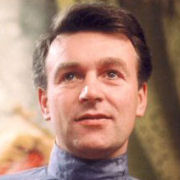
|
|
Barbara Wright was a history teacher from
1963 England who, like Ian Chesterton, found herself being abducted into
time and space by the Doctor.
Jacqueline Hill (bio) made her first appearance as
Barbara in 100,000 BC (November
1963) and her last in The Chase
(June 1965).
|
|
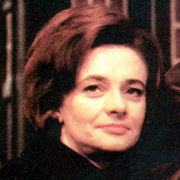
|
|
Throughout the original 1963-1989 run of Doctor Who, the
production team primarily consisted of a producer and a story editor
(later called a script editor). Doctor Who's first producer was
Verity Lambert (bio), a novice in the position who
was brought to the BBC by series creator Sydney Newman. To help guide
Lambert, BBC veteran Mervyn Pinfield (bio) was installed in
the role of associate producer. David
Whitaker (bio), another reliable BBC hand,
was Doctor Who's first story editor.
|

|
|
100,000 BC by Anthony Coburn, directed
by Waris Hussein
Intrigued by a strange pupil named Susan Foreman, schoolteachers Ian
Chesterton and Barbara Wright follow her home one night.
“Home” turns out to be a time machine called the TARDIS, its
police box disguise concealing an immense interior. Susan's grandfather,
the Doctor, becomes determined to prevent Ian and Barbara from unmasking
them as alien wanderers in time and space. Activating his temperamental
ship, the Doctor catapults them back into humanity's prehistory. There
the four are captured by a tribe of cavemen, to be sacrificed as a means
of regaining the lost secret of making fire. (Also known as An
Unearthly Child and The Tribe Of Gum.)
|
Ian and Barbara join the Doctor and Susan in their travels.
|
|---|
|

|
|
The Daleks by Terry Nation, directed by
Christopher Barry and Richard Martin
The TARDIS brings the travellers to Skaro, a world devastated by the
radioactive fallout of a long-ago war, which has mutated its two native
races in very different ways. The Thals are now beautiful and
peace-loving, while the Daleks have become cunning, xenophobic monsters
housed inside travel machines. The Thals save the four newcomers from
radiation poisoning, but the Daleks are plotting to exterminate their
ancient enemies. The Doctor is determined not to intervene... until he
realises that the Daleks are in possession of a vital TARDIS component.
(The serial's actual title is The Mutants, but this is
generally avoided due to the potential confusion with 1972's The Mutants. Also known as The
Dead Planet.)
|

|
|
Inside The Spaceship by David Whitaker,
directed by Richard Martin and Frank Cox
Something is very wrong with the TARDIS. After an explosion knocks
everyone unconscious, its four occupants awaken to find the time
machine malfunctioning in strange ways. The doors open to reveal a white
void, clock faces melt, and the scanner screen displays a baffling
series of images. To make matters worse, those aboard behave in an
increasingly erratic, paranoid and even violent manner. Has some strange
force invaded the TARDIS, or is one of the time travellers actually
sabotaging the Ship? As hysteria mounts and the seconds slip away, they
find themselves on the brink of disaster. (Also known as The Edge
Of Destruction and Beyond The Sun.)
|

|
|
Marco Polo by John Lucarotti, directed by
Waris Hussein and John Crockett
The TARDIS lands in 1289 China. There it is seized by explorer Marco
Polo, who intends to present it as a gift to Kublai Khan, in the hope that
it will win him his freedom. The Doctor, Susan, Ian and Barbara will
have to accompany Polo as he travels across the desert to the court in
Peking. Susan befriends a young girl in the caravan named Ping-Cho, who
is heading towards an arranged marriage. Also accompanying Polo is
Tegana, an emissary of a rival warlord. While claiming to seek peace
with Kublai Khan, Tegana's true mission is to assassinate the Khan,
imperilling the lives of Polo and all those journeying with him. (All
seven episodes are missing.)
|

|
|
The Keys Of Marinus by Terry Nation,
directed by John Gorrie
Many years ago, the people of the planet Marinus developed the
Conscience, a computer with the power to control minds. It was used only
to keep the peace until Yartek, leader of the evil Voords, overcame its
influence. To prevent Yartek from using the Conscience as a weapon, the
five keys that power it were hidden. Now the scientist Arbitan believes
he can defeat Yartek and compels the Doctor, Susan, Ian and Barbara to
embark on a quest to recover the keys. But many dangers lie between the
companions and their goal: hypnotic monsters, killer plants, ice
zombies, and finally a charge of murder.
|

|
|
The Aztecs by John Lucarotti, directed by
John Crockett
In 1430 South America, Barbara is mistaken by the Aztecs as the
reincarnation of the High Priest Yetaxa. Now regarded as a living deity,
Barbara realises that she could change history and end the Aztec
practice of human sacrifice. But while Barbara has the loyalty of
Autloc, the High Priest of Knowledge, she is mistrusted by Tlotoxl, the
High Priest of Sacrifice. Scheming to disprove Barbara's divinity,
Tlotxl kindles a rivalry between Ian and a mighty Aztec warrior, and
ensures that Susan is chosen to wed a sacrificial victim. And how will
the Doctor react to Barbara's decision?
|

|
|
The Sensorites by Peter R Newman,
directed by Mervyn Pinfield and Frank Cox
The TARDIS lands on an Earth spaceship orbiting the Sense-Sphere, its
crew held prisoner by the telepathic Sensorites. The time travellers are
able to make peaceful contact with the reclusive Sensorites, and learn
that there has been a wave of deaths on the Sense-Sphere ever since
another human expedition landed ten years earlier. The Doctor sets out
to discover what has been killing the Sensorites... and his need becomes
all the more urgent when Ian's health begins to fail. At the same time,
he must contend with the machinations of a Sensorite who sees the chaos
as the chance to seize power for himself.
|

|
|
The Reign Of Terror by Dennis Spooner,
directed by Henric Hirsch
The four companions find themselves in eighteenth-century France, during
the dying days of Robespierre's blood-drenched Reign of Terror. Ian,
Barbara and Susan are captured by soldiers of the Revolutionary Army and
thrown into a grubby prison run by an enigmatic governor named Lemaitre.
The women are sentenced to death at the guillotine, while a dying spy
entrusts Ian with a vital message. Meanwhile, the Doctor poses as a
member of the new ruling elite and embarks on a mission to save his
friends. But in a land of suspicion where hidden agendas abound, can
anyone be trusted to help? (Episodes four and five are missing.)
|
|
Doctor Who was created in response to a long-identified need for
a family show to bridge the gap in the BBC's Saturday evening schedule,
between afternoon sports coverage and teenage-oriented music
programming. The brainchild of new BBC Head of Drama Sydney Newman, few
gave the science-fiction series a chance to succeed. But ratings
skyrocketed following the introduction of the Daleks in Doctor
Who's second adventure, securing the programme's place in the
schedule. In the span of mere weeks, Doctor Who became a
household name, and an enduring television phenomenon was born.
|
| Season Two (1964-65): Flight Through
Eternity |
| Companions and Recurring Characters |
|
Vicki was an orphan from the twenty-fifth
century who was rescued from the planet Dido by the Doctor.
Maureen O'Brien (bio) made her first appearance as
Vicki in The Rescue (January 1965)
and her last in The Myth Makers
(November 1965).
|
|
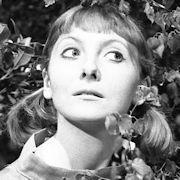
|
|
Steven Taylor was a space pilot from the
future whom the Doctor met on the planet Mechanus.
Peter Purves (bio) made his first appearance as
Steven in The Chase (June 1965) and
his last in The Savages (June
1966).
|
|
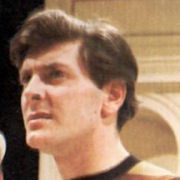
|
|
With Verity Lambert now firmly installed as producer, Mervyn Pinfield
left Doctor Who midway through Season Two. David Whitaker, too,
departed early in the season, to be succeeded by Dennis Spooner (bio). Spooner worked diligently to
expand Doctor Who's horizons by introducing new elements such as
comedy into the series. Toward the season's end, Spooner also left the
show and Donald Tosh (bio) became script editor.
|

|
|
Planet Of Giants by Louis Marks, directed
by Mervyn Pinfield and Douglas Camfield
When the doors of the TARDIS open in mid-flight, its occupants are
reduced to just inches in height. They land in an English country
garden, where the unscrupulous Forester plans to profit from a powerful
new insecticide called DN6. However, when a government representative
named Farrow discovers that DN6 will have devastating effects on the
environment, Forester shoots him dead. Despite their diminutive size,
the time travellers must find a way to bring Forester to justice -- even
as Barbara begins to succumb to the poisonous effects of DN6.
|

|
|
The Dalek Invasion Of Earth by Terry
Nation, directed by Richard Martin
The Doctor, Susan, Ian and Barbara find themselves on Earth in the
middle of the twenty-second century... and the Daleks have invaded. Now
the streets of London are stalked by the Daleks' brainwashed human
puppets -- the Robomen -- while more terrible monsters roam the
countryside. Ian stows away aboard a Dalek saucer, while the others
forge an uneasy alliance with a desperate band of freedom fighters, led
by the scientist Dortmun. But in order to reclaim the planet for
humankind, they must first uncover the true purpose of the Daleks'
massive mining operations in Bedfordshire.
|
Susan stays behind with rebel David Campbell.
|
|---|
|

|
|
The Rescue by David Whitaker, directed by
Christopher Barry
An Earth spacecraft has crashlanded on Dido in the year 2493, and most
of its crew has been murdered by the planet's denizens. The only
survivors are Bennett, crippled and bedridden, and an orphaned girl
named Vicki. They are now being terrorised by the monstrous Koquillion
while they wait for a rescue ship to arrive. When the TARDIS lands on
Dido, the Doctor expects to meet a peaceful native race, and is baffled
that the planet seems all but deserted. When Koquillion tries to kill
them, the time travellers become determined to discover his true
motives, and his real identity.
|
Alone in the world, Vicki joins the TARDIS crew.
|
|---|
|

|
|
The Romans by Dennis Spooner, directed by
Christopher Barry
Whilst vacationing in AD 64 Rome, Ian and Barbara are kidnapped and sold
as slaves. Ian ends up on a doomed galley ship, while Barbara becomes a
handmaiden in Nero's palace, pursued by the lusty Caesar himself.
Meanwhile, the Doctor and Vicki are travelling to Rome, unaware of their
friends' plight. On the road, they discover the body of a murdered
musician named Maximus Pettulian. The Doctor decides to investigate by
masquerading as Pettulian, unaware that he is embroiling himself in a
conspiracy against Nero -- and in the events which culminate in the
Great Fire of Rome.
|

|
|
The Web Planet by Bill Strutton, directed
by Richard Martin
A strange force draws the TARDIS to the desolate planet Vortis. Barbara
is compelled to leave the time machine, and is rescued by the
butterfly-like Menoptra, who have returned from outer space to retake
their planet from an alien force called the Animus. The Animus has
ravaged Vortis and taken control of its lower animal life, including
giant ants called the Zarbi. The Zarbi steal the TARDIS with Vicki
inside, and carry it to the Carsenome, the Animus' terrible lair. There
the Doctor is compelled to assist in repelling the Menoptra invasion:
the final stage in the Animus' global conquest.
|

|
|
The Crusade by David Whitaker, directed
by Douglas Camfield
In twelfth-century Palestine during the Third Crusade, the time
travellers stumble into an attempt by the sinister El Akir to kidnap
King Richard the Lionheart on behalf of Saladin, the Saracen ruler.
Although Richard is saved, Barbara is captured. The Doctor, Ian and
Vicki implore Richard to rescue their friend -- even winning the support
of the King's sister, Joanna -- but the Lionheart's pride makes him
hostile to any suggestion that he negotiate with his sworn enemies. And
while Saladin treats Barbara kindly, she has caught the eye of El Akir,
whose intentions are far less noble. (Episodes two and four are
missing.)
|

|
|
The Space Museum by Glyn Jones, directed
by Mervyn Pinfield
The TARDIS lands at a space museum on the planet Xeros. The four
companions set out to explore, but quickly realise that something is
very odd: they leave no tracks, they can't touch anything, and nobody in
the museum reacts to their presence. When they find themselves displayed
as exhibits, the Doctor realises that they have jumped a time track, and
are glimpsing their own future. When time catches up with them, they
have no choice but to ally themselves with the native Xerons against the
warlike Moroks who rule the planet, if they're to have any hope of
averting their horrible destiny.
|

|
|
The Chase by Terry Nation, directed by
Richard Martin
On the desert planet Aridius, Ian and Vicki go exploring while the
Doctor and Barbara enjoy the sun. However, the companions are unaware
that the Daleks have constructed their own time machine, and are
determined the hunt down the TARDIS. The Daleks land amidst a terrible
sandstorm, forcing the Doctor and Barbara to seek help from the native
Aridians in locating Ian and Vicki, who are menaced by terrible Mire
Beasts. But Aridius is just the first stop in a desperate chase through
time and space, which will lead to the Empire State Building, the
Mary Celeste, a haunted house, and beyond.
|
Barbara and Ian return to their own time in the Dalek time machine,
while space pilot Steven Taylor joins the Doctor and Vicki.
|
|---|
|

|
|
The Time Meddler by Dennis Spooner,
directed by Douglas Camfield
The TARDIS brings the Doctor, Vicki and Steven to 1066 England, on the
outskirts of a Saxon village, where they stumble across technology
centuries ahead of its time. The Doctor discovers that a nearby
monastery is now home to a time-travelling member of his own race, one
with a penchant for interfering in established history. With the Battle
of Hastings imminent, this erstwhile Monk has been tracking the Viking
fleet that has been harassing the Saxons. He intends to destroy it using
advanced weaponry -- positioning King Harold to defeat William the
Conqueror, and irrevocably altering Earth's future.
|
|
Despite losing much of its original cast and production team -- by the
season's end, only William Hartnell and Verity Lambert were left of the
original roster -- Doctor Who thrived amidst all the changes. The
return of the Daleks, in response to furious demands from fans across
Britain, simply fuelled the fire that had been ignited by the original
appearance of the mutants from Skaro. Dalek merchandise was soon all but
unavoidable, with a weekly comic strip and even a feature film
manifesting as the season progressed.
|
| Season Three (1965-66):
Turbulence |
| Companions and Recurring Characters |
|
Katarina was a Trojan handmaiden who met
the Doctor during the events surrounding the Greek siege of Troy.
Adrienne Hill (bio) made her first appearance as
Katarina in The Myth Makers
(November 1965) and her last in The Daleks'
Master Plan (December 1965).
|
|
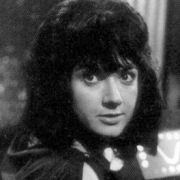
|
|
Sara Kingdom was a Space Special Security
agent in the forty-first century, who allied herself with the Doctor
after discovering that she had been manipulated by the treacherous Mavic
Chen.
Jean Marsh (bio) played Sara in The Daleks' Master Plan (December 1965
to January 1966).
|
|

|
|
Dorothea (Dodo) Chaplet -- who may have
been a descendant of the Doctor's friend Anne Chaplet, who lived at the
time of the 1572 Huguenot Massacre -- was a mid-Sixties British
schoolgirl who accidentally wandered into the TARDIS.
Jackie Lane (bio) made her first appearance as Dodo
in The Massacre Of St Bartholomew's
Eve (February 1966) and her last in The War Machines (July 1966).
|
|
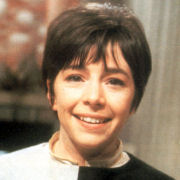
|
|
Polly was a young secretary in 1966 London
who first encountered the Doctor when she became a pawn of the evil
computer WOTAN.
Anneke Wills (bio) made her first appearance as
Polly in The War Machines (June
1966) and her last in The Faceless
Ones (May 1967).
|
|
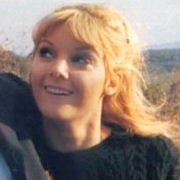
|
|
Ben Jackson was a merchant seaman who
befriended the Doctor during the computer WOTAN's attack on 1966
London.
Michael Craze (bio) made his first appearance as Ben
in The War Machines (June 1966) and
his last in The Faceless Ones (May
1967).
|
|
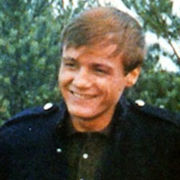
|
|
Early in Season Three, Verity Lambert stepped down as producer and was
succeeded by John Wiles (bio). With Donald Tosh, Wiles attempted
to remould Doctor Who as a more serious, less juvenile
science-fiction programme, but they came into conflict with William
Hartnell. With BBC management on Hartnell's side, Wiles and Tosh
tendered their resignations. Their replacements were Innes Lloyd (bio) as producer and Gerry Davis (bio) as script editor. They instead
sought to emphasise the “science” in
“science-fiction”, even bringing aboard Dr Kit Pedler as
Doctor Who's unofficial scientific advisor.
|

|
|
Galaxy 4 by William Emms, directed by
Derek Martinus
When the TARDIS lands on a barren world, the three companions emerge to
find a robot that Vicki nicknames a Chumbley. They are rescued from the
Chumbley by the beautiful Drahvins; their leader, Maaga, explains that
the robot serves their hideous enemies, the Rills. The Drahvins and the
Rills were engaged in a battle in space when they both crashlanded on
this planet -- a planet that is on the verge of exploding. But even as
the Drahvins start using increasingly strong-arm tactics to get the time
travellers to help them, the Doctor discovers that the planet's doom is
not days away... but mere hours. (Episodes one, two and four are
missing.)
|

|
|
Mission To The Unknown by Terry Nation,
directed by Derek Martinus
A spaceship captained by Gordon Lowery has landed on Kembel.
One of his fellow astronauts, Jeff Garvey, becomes infected by a Varga
plant, and is consumed with homicidal rage even as he starts to turn
into a Varga plant himself. Garvey is killed by the ship's other
passenger, Marc Cory, who reveals that he is an agent of the Space
Security Service. His mission is to expose a Dalek plot being hatched at
a secret base on Kembel -- one that involves a conspiracy spanning the
stars. But with Daleks bearing down on him, and Lowery also succumbing
to the Varga infection, can Cory survive to warn the galaxy? (Also
known as Dalek Cutaway. This episode is missing.)
|

|
|
The Myth Makers by Donald Cotton,
directed by Michael Leeston-Smith
For years, the city of Troy has been besieged by Greek forces, but now
both sides are growing weary of the conflict. When the TARDIS
materialises, the Doctor is mistaken for the god Zeus, but he soon
attracts the suspicions of the wily Odysseus. News soon comes that the
Trojans have captured the TARDIS -- with Vicki still inside. Steven
agrees to infiltrate Troy, while the Doctor is tasked with devising a
scheme to achieve victory for the Greeks, once and for all. Inside the
walls of Troy, Vicki finds romance with Troilus, youngest son of King
Priam. But Troilus' sister, Cassandra, prophesies doom in the shape of a
horse... (All four episodes are missing.)
|
Vicki remains with Troilus, while handmaiden Katarina helps a wounded
Steven into the TARDIS.
|
|---|
|

|
|
The Daleks' Master Plan by Terry Nation
and Dennis Spooner, directed by Douglas Camfield
On the planet Kembel, the Doctor meets Space Security Service agent Bret
Vyon, who is searching for his missing colleague, Marc Cory. They learn
that Cory was murdered by the Daleks, who have formed a vast
intergalactic alliance -- of which Mavic Chen, the traitorous Guardian
of the Solar System, is a member. The Daleks plan to use a time
destructor to take over the universe, but the Doctor steals the taranium
core needed to fuel it. The Doctor, Steven, Katarina and Bret are soon
pursued across time and space by the Dalek forces... including Bret's
own sister, fellow agent Sara Kingdom. (Episodes one, three, four,
six through nine, eleven and twelve are missing.)
|
Katarina sacrifices herself to save the Doctor and Steven; Sara becomes a
TARDIS traveller, but perishes due to the effects of the time
destructor.
|
|---|
|

|
|
The Massacre Of St Bartholomew's Eve by
John Lucarotti and Donald Tosh, directed by Paddy Russell
The TARDIS lands in 1572 Paris. While the Doctor visits an apothecary
named Charles Preslin, Steven befriends two Huguenots in the service of
Admiral de Coligny, who is loyal to France's Protestant prince, Henry
of Navarre. They meet Anne Chaplet, a servant employed by the Abbot of
Amboise. Anne reveals that the Abbot is helping plan a slaughter of
Huguenots: a massacre sanctioned by Catherine de Medici, the King's
mother. But when Steven discovers that the Abbot looks just like the
Doctor, he must determine whether this is really his friend in disguise
-- and, if so, the role he must play in the terrible events. (Also
known as The Massacre. All four episodes are missing.)
|
In 1966, schoolgirl Dodo Chaplet accidentally stumbles into the TARDIS.
|
|---|
|

|
|
The Ark by Paul Erickson and Lesley
Scott, directed by Michael Imison
The TARDIS arrives a space ark, ten million years in the future. The
ship is carrying humanity from the doomed Earth to its new home, the
planet Refusis Two. Most of the passengers are dormant in miniaturised
form; only the essential crew is awake, assisted by the subservient
alien Monoids. Dodo suffers from the common cold, and it's soon
discovered that neither the future humans nor the Monoids possess an
immunity. The Doctor must find a cure before the space ark is ravaged
with plague... and, seven hundred years later, confront the terrible
consequences as the journey to Refusis Two nears its end.
|

|
|
The Celestial Toymaker by Brian Hayles,
directed by Bill Sellars
The TARDIS is taken to the surreal Celestial Toyroom by the nefarious
Toymaker, an old foe of the Doctor's. Steven and Dodo are forced to play
a series of games against increasingly deceitful opponents -- dolls and
nursery characters, brought to life by the Toymaker -- in order to
regain possession of the TARDIS. Meanwhile, the Doctor must solve the
Trilogic Game in a battle of wits against the Toymaker himself. If any
of the time travellers fail, they will be trapped in the Toyroom
forever, transformed into playthings under the Toymaker's control.
(Episodes one through three of this story are missing.)
|

|
|
The Gunfighters by Donald Cotton,
directed by Rex Tucker
When the TARDIS materialises in Tombstone, Arizona in the year 1881, the
Doctor's first priority is to find help for his toothache. But the local
dentist is Doc Holliday, who's being pursued by the Clanton gang for
killing their brother. The Clantons' hired gun, Seth Harper, mistakes
the Doctor for Holliday, forcing Marshal Wyatt Earp and his kin to
intervene. Over the protests of his fiancee, Kate the barmaid, Holliday
seizes the opportunity to shake the Clantons; he takes Dodo hostage and
prepares to leave town. With a showdown imminent at the OK Corral, who
will survive to sing The Ballad Of The Last Chance Saloon?
|

|
|
The Savages by Ian Stuart Black,
directed by Christopher Barry
The TARDIS lands on a planet in the far future, where the Elders live in
an advanced city and enjoy a life of peace and prosperity. Jano, the
leader of the Elders, knows something of the Doctor's exploits, and
invites the time travellers to tour the city. Dodo slips away, and
discovers that the Elders thrive because they have harnessed the life
energy of the primitive Savages, who dwell in the wasteland beyond the
city. The Doctor becomes determined to help the Savages, but he is
captured by the Elders. Jano reveals that he intends to harvest the
Doctor's life energy for himself... (All four episodes are missing.)
|
Steven leaves his friends to become the leader of the Elders and the
Savages.
|
|---|
|

|
|
The War Machines by Ian Stuart Black
and Pat Dunlop, directed by Michael Ferguson
Arriving in 1966 London, the Doctor feels that something is wrong in the
newly-completed Post Office Tower. He and Dodo learn that it houses
WOTAN (Will Operating Thought ANalogue), which is designed to link up
with other computers worldwide. But WOTAN has become sentient, and has
determined that humanity must be subjugated. WOTAN takes hypnotic
control of its creators, and directs them to initiate the construction
of armed mobile computers called War Machines. Aware of the threat posed
by the time travellers, WOTAN also brainwashes Dodo, with the intention
of using her to lure the Doctor into a trap...
|
Dodo leaves to convalesce; seaman Ben Jackson and his friend Polly board
the TARDIS while attempting to return the Doctor's spare key.
|
|---|
|
|
The third season of Doctor Who was a time of disruption. In
addition to the upheaval amongst the production team, William Hartnell's
health was declining. The arteriosclerosis from which he suffered
impacted his ability to memorise lines, and left him physically
fatigued. As a result, several episodes were tailored to minimise the
Doctor's involvement or eliminate him entirely. Meanwhile, Dalekmania
was starting to ebb, and it was clear that Doctor Who could not
rely on the Daleks as its sole draw. Lloyd and Davis decided to refocus
the series to appeal to a more modern audience, dropping elements seen
as old-fashioned. For instance, companions Steven and Dodo were replaced
by Ben and Polly, two characters born out of the Swinging Sixties.
Similarly, it was decided that modern-day Earth would become a more
regular setting, showcasing alien activity in our time rather than
confining it exclusively to the far future and other planets.
|
| Season Four (1966): Wearing A Bit
Thin |

|
|
The Smugglers by Brian Hayles, directed
by Julia Smith
On the Cornish coast in the seventeenth century, the time travellers
meet a churchwarden named Longfoot. He claims to be hunted by shipmates
from his pirate days, who are determined to recover stolen gold.
Longfoot gives them a clue to the location of the treasure, but is
murdered by an agent of the vicious Captain Pike. The Doctor is
kidnapped by Pike's men, while his companions flee from Squire Edwards,
who accuses them of killing Longfoot. Intent on finding the gold
themselves, Ben and Polly become involved with Josiah Blake, a revenue
officer on the trail of local smugglers. (All four episodes are
missing.)
|

|
|
The Tenth Planet by Kit Pedler and Gerry
Davis, directed by Derek Martinus
The TARDIS lands near an international tracking station in Antarctica. The
year is 1986, and the Doctor, Polly and Ben are just in time to witness
the arrival in the solar system of Mondas, a planet which is the mirror
image of Earth. Soon, Mondas begins to drain Earth of its energy, while
the tracking station is invaded by the other world's natives: the
Cybermen, humans who have replaced living tissue with cybernetic
attachments. Polly and Ben must save their planet and stop the Cybermen
from converting all humanity into creatures like themselves... but
something is very wrong with the Doctor. (Episode four is
missing.)
|
The increasingly frail Doctor staggers into the TARDIS and regenerates
into his second incarnation.
|
|---|
|
|
With William Hartnell's health in decline, the Doctor Who
production team made a decision which would -- quite literally -- change
the face of the programme forever. Having secured permission to replace
Hartnell with a new lead actor, Innes Lloyd and Gerry Davis introduced
the concept of regeneration into the series, explaining that the Doctor
possessed the ability to change his physical form when his current body
had worn out. The result was a “new” Doctor, with a
completely different appearance and personality. With this mechanism in
place, it was hoped that Doctor Who could survive the departure
of its star.
|
|